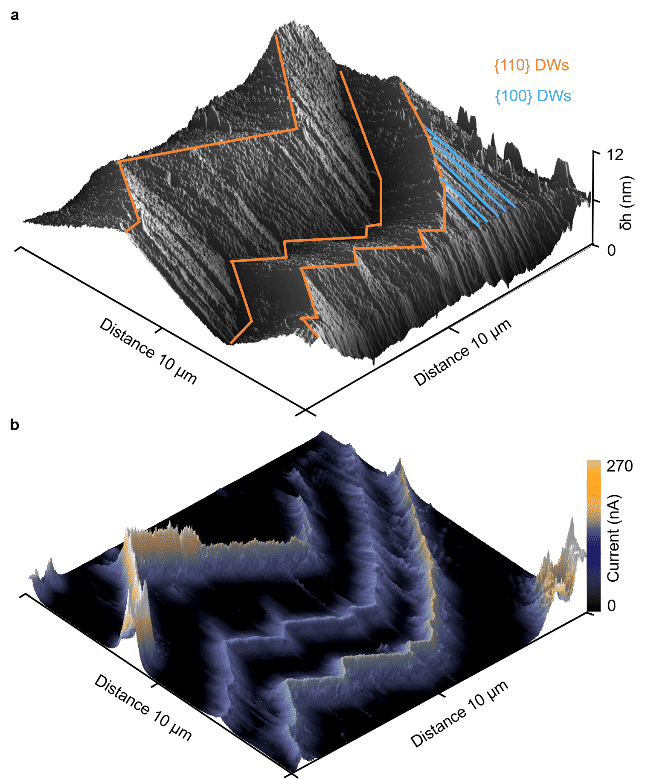
Strain driven conducting domain walls in a mott insulator
2Laboratory of Physics of Semiconductor Compounds "Sergiu Radauțan", Institute of Applied Physics, Chisinau, Moldova
Ferroelectric domain walls, which can be written, tuned or erased, are being considered as functional building blocks for nanoelectronics. Especially, conducting domain walls are of high interest to achieve this functionality.
To date, the origin for increased conductivity in ferroelectrics domain walls has been typically attributed to the formation of screening charges driven by polar discontinuities.
Here, we establish that for the template system, the lacunar spinel GaV4S8, also strain can enhance the conductivity of specific domain walls. This system exhibits ferroelectric domain pattern below a Jahn-Teller transition at 42K. At this temperature a change in its crystal structure can result in mechanical stress at domain walls. Piezoresponse force microscopy revealed an interesting ferroelectric pattern. Each ferroelectric domain can be identified to be one of the four possible (structural) polar direction. In case of domain walls between structural incompatible domains, measurements with conductive atomic force microscopy show strongly enhanced conductivity. Further, spatially resolved IV spectroscopy enables the investigation of the underlying conductivity mechanism at the tip-sample interface, being described best by the Space-Charge model.

L. Puntigam et al. “Strain driven conducting domain walls in a Mott Insulator” Adv. Electron. Mater. 2022, 8, 2200366
Powered by Eventact EMS
